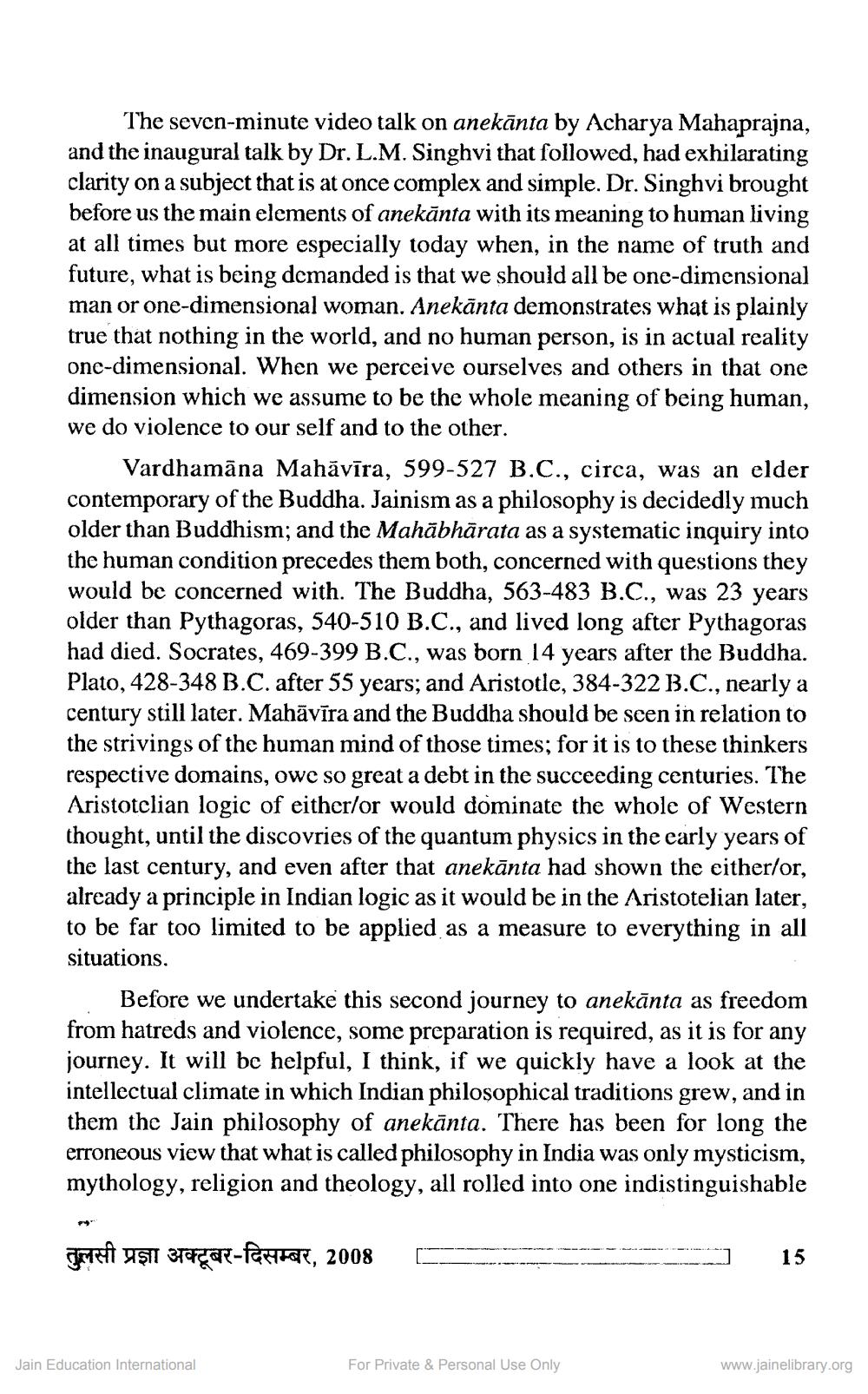________________
The seven-minute video talk on anekānta by Acharya Mahaprajna, and the inaugural talk by Dr. L.M. Singhvi that followed, had exhilarating clarity on a subject that is at once complex and simple. Dr. Singhvi brought before us the main elements of anekānta with its meaning to human living at all times but more especially today when, in the name of truth and future, what is being demanded is that we should all be one-dimensional man or one-dimensional woman. Anekānta demonstrates what is plainly true that nothing in the world, and no human person, is in actual reality one-dimensional. When we perceive ourselves and others in that one dimension which we assume to be the whole meaning of being human, we do violence to our self and to the other.
Vardhamāna Mahāvīra, 599-527 B.C., circa, was an elder contemporary of the Buddha. Jainism as a philosophy is decidedly much older than Buddhism; and the Mahābhārata as a systematic inquiry into the human condition precedes them both, concerned with questions they would be concerned with. The Buddha, 563-483 B.C., was 23 years older than Pythagoras, 540-510 B.C., and lived long after Pythagoras had died. Socrates, 469-399 B.C., was born 14 years after the Buddha. Plato, 428-348 B.C. after 55 years; and Aristotle, 384-322 B.C., nearly a century still later. Mahāvīra and the Buddha should be seen in relation to the strivings of the human mind of those times; for it is to these thinkers respective domains, owe so great a debt in the succeeding centuries. The Aristotelian logic of either/or would dominate the whole of Western thought, until the discovries of the quantum physics in the early years of the last century, and even after that anekānta had shown the cither/or, already a principle in Indian logic as it would be in the Aristotelian later, to be far too limited to be applied as a measure to everything in all situations.
Before we undertake this second journey to anekānta as freedom from hatreds and violence, some preparation is required, as it is for any journey. It will be helpful, I think, if we quickly have a look at the intellectual climate in which Indian philosophical traditions grew, and in them the Jain philosophy of anekānta. There has been for long the erroneous view that what is called philosophy in India was only mysticism, mythology, religion and theology, all rolled into one indistinguishable
mest uşii stagare-fortesre, 2008
-
-
15
Jain Education International
For Private & Personal Use Only
www.jainelibrary.org




